Celebrate the Caribbean Endemic Bird Festival (CEBF) with us! Our theme in 2023 is “Water: Sustaining Bird Life,” highlighting the importance of water conservation to both humans and birds. Have fun learning about a new endemic bird every day. We have colouring pages, puzzles, activities, and more. Download for free and enjoy nature with your family at home.
Endemic Bird of the Day: Yellow-headed Warbler
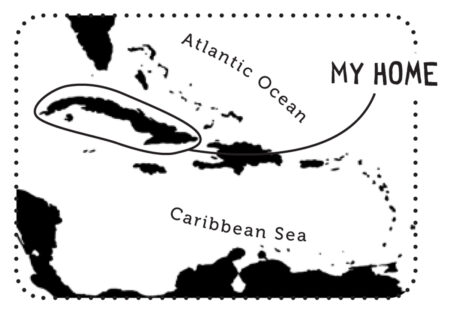 Easy to spot because it forages in the understory is a small distinct warbler with an all-yellow head that contrasts with a plain gray body—the Yellow-headed Warbler (Teretistris fernandinae). It occurs over the western third of the main island of Cuba, as well as on the Isle of Youth and Cayo Cantiles. It is one of two warbler species endemic to Cuba.
Easy to spot because it forages in the understory is a small distinct warbler with an all-yellow head that contrasts with a plain gray body—the Yellow-headed Warbler (Teretistris fernandinae). It occurs over the western third of the main island of Cuba, as well as on the Isle of Youth and Cayo Cantiles. It is one of two warbler species endemic to Cuba.
The Yellow-headed Warbler is considered a “sister species” of the more easterly distributed Oriente Warbler (Teretistris fornsi), the other endemic warbler. Sister species are closely related – they are the two descendant species formed when one species splits during evolution.
In recent times, some biologists found an area of geographical overlap of the two species on the south side of the island between Cienfuegos and Trinidad City. Interestingly they have discovered a hybrid population here!! This means that both species have been living in this area and breeding with each other for years!! Hybrid zones happen when two closely related species come into contact with one another again and interbreed.
It’s easy to tell these two warblers apart in the field. The Yellow-headed Warbler, has an all-yellow hood and yellow eye-rings and the rest of the plumage is plain gray while the Oriente Warbler has a gray head but yellow face and chest. So you may be wondering, what do the hybrid warblers look like? The hybrids have a yellow hood and yellow chest!
Yellow-headed Warblers inhabit forests and wooded vegetation at all elevations, also scrubby thickets in semi-arid areas. They form small flocks when they are looking for food like insects and other invertebrates, mostly in understory, but also on the ground or in branches. During this time you may hear them making high-pitched buzzy notes tsi-tsi-tsi tsi-tsi, repeated many times.
Many other species of birds tag along with these bustling foraging flocks and often wait for the insects that escape from the Yellow-headed Warblers. They also benefit from the added protection of being alerted to the presence of lurking predators. It is common to see Cuban Vireos, La Sagra´s Flycatchers and Cuban Bullfinches, as well as migratory warblers like Black-and-White Warblers, Prairie Warblers, Worm-eating Warblers, and Northern Parulas joining the flock of Yellow-headed Warblers.
With spring, starting in March, the numbers of insects and bugs begin to increase! This is when the breeding season for the Yellow-headed Warbler starts and usually continues until July. It builds a cup-shaped nest of grasses, rootlets, and other plant fibers placed low or fairly low in a bush, vine, or sapling. Clutch size is 2 to 3 eggs, with egg-laying taking place from April to June.
Although the conservation status of the Yellow-headed Warbler is Least Concern, we need to monitor and protect this bird. Keep in mind that it is a restricted-range species, present only in western Cuba. It is therefore vulnerable to many threats, such as deforestation, pollution, and impacts from climate change, including severe drought, storms, and hurricanes. These threats could kill birds outright as well as damage their habitats, food sources and ability to breed successfully. Learn more about this species, including its range, photos, and calls here.
Thanks to Ernesto Reyes Mouriño for the text!
Colour in the Yellow-headed Warbler
Download our West Indies Endemic Bird colouring page. Use the photos below as your guide, or you can look up pictures of the bird online or in a bird field guide if you have one. Share your coloured-in page with us by posting it online and tagging us @BirdsCaribbean #CEBFfromthenest
Listen to the song of the Yellow-headed Warbler
The song of the Yellow-headed Warbler is series of raspy, high-pitched, buzzy notes.
Puzzle of the Day
Click on the image below to do the puzzle. You can make the puzzle as easy or as hard as you like – for example, 6, 8, or 12 pieces for young children, all the way up to 1,024 pieces for those that are up for a challenge!
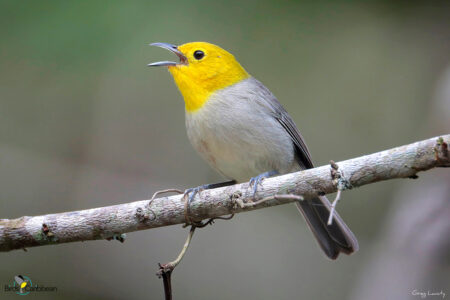
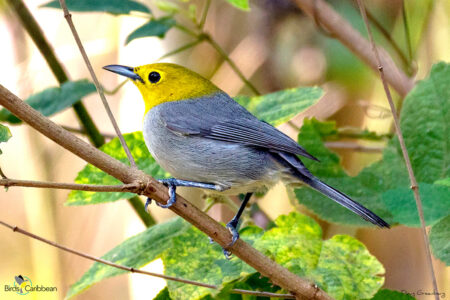
Activity of the Day
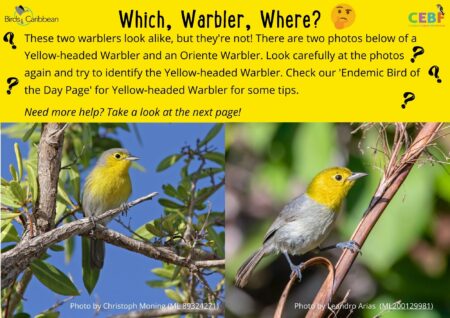 FOR KIDS: There are two warblers who both live in Cuba and look very much alike, but they’re not the same! Once is today’s endemic bird, the Yellow-headed Warbler, and the other is the Oriente Warbler. Both are mainly gray and yellow! In our activity of the day you need to look carefully at two photos and try to identify the Yellow-headed Warbler. Check the text above for some handy tips.
FOR KIDS: There are two warblers who both live in Cuba and look very much alike, but they’re not the same! Once is today’s endemic bird, the Yellow-headed Warbler, and the other is the Oriente Warbler. Both are mainly gray and yellow! In our activity of the day you need to look carefully at two photos and try to identify the Yellow-headed Warbler. Check the text above for some handy tips.
If you get stuck and feel like you need a bit of extra help then take a look on the second page of this activity. You will find some helpful hints to set you on the right track.
Thinks that you found the Yellow-headed Warbler? You can check if you are right on our answer sheet here. This activity is perfect to play with school groups or outdoor education clubs etc.
FOR KIDS AND ADULTS: Enjoy this delightful video of a Yellow-headed Warbler foraging in the wild!

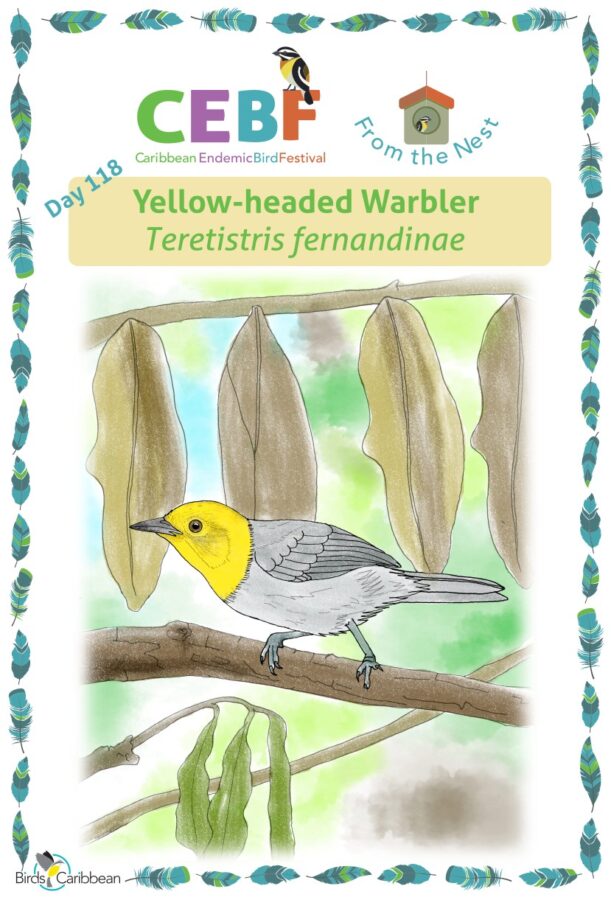
One comment
Comments are closed.